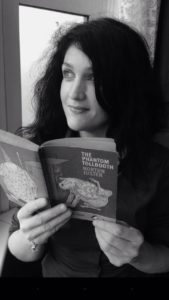
News by Johanne
Autofiction – what is it?
Writing about lived experience is nothing new, and yet there has been a recent surge of books that blend aspects of the memoir with elements borrowed from fiction. Examples of such literature, coined ‘autofiction’ by the French writer Serge Dubrovsky, have proved to be highly readable, genre-bending accounts of the author’s life’. Autofiction can also be used to describe autobiographical fiction, a fictionalised narrative that draws on the author’s life and experience, and fictionalised autobiography, which is modelled more closely on real life with some compressed or fictionalised events or characters.
Where biography or memoir is concerned with a truthful and linear account of a famous or otherwise ‘important’ life, the most successful autofictional accounts of recent years have been largely concerned with everyday life. Fictionalised autobiography can borrow from ‘traditional’ fiction in that it does not have to include a straightforward narrative, but can instead contain snippets of everything from personal essays to reportage, poetry or nature writing, and merges passages of philosophy, history, biography, science or literary theory with accounts of the author’s life.
Fiction writers have always drawn on their own experiences in their work – the literary canon is positively littered with thinly veiled self-portraits. However, autofiction as we discuss it today exploded around 2013, when the first volume of Norwegian writer Karl Ove Knausgaard’s controversial literary project My Struggle was published in English. Through Don Bartlett’s translation, the English-speaking world was exposed to the ‘story’ of Knausgaard’s internal and external life, filled with authentic names, places and events.
Half his family quickly disowned him, and his uncle threatened to sue both the publishers and Knausgaard himself over his damning descriptions of his own father. While hailed as a literary sensation, My Struggle also sparked debate around the ethics of fictionalised autobiography. Is there such a thing as a one-to-one relationship between the real world and the world of fiction? How far should you be able to go as a writer in your description of easily identifiable people? Should the ‘characters’ in such narratives have their say?
In my native Norway there has been an interesting examples of the latter: When Vigdis Hjorth published her novel Arv og miljø, (which will be published in English as Wills and testaments in September) a novel that some critics interpreted to be an accusation of incest directed towards her real father, her sister Helga wrote a ‘revenge novel’ about a woman who is made into a character in a book written by her sister.
Some critics argue that it is the rather extreme and often confusing 21st century that has sparked the need for such an introverted and fragmented literary form, giving way to contemporary writers such as Knausgaard, Rachel Cusk, Chris Kraus, Helen Macdonald, Edouard Louis, Edward St Aubyn, Olivia Laing, Linn Ullmann and Maggie Nelson to name a few. Regardless of why these authors direct their writerly gaze inwards, the results are extraordinary yet controversial – not necessarily truthful, but almost always honest.
Want to try one?




